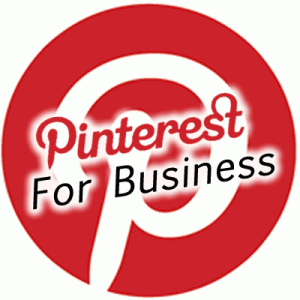

1. Create a Business Account
When you’re creating a new account at Pinterest, be sure to create a business account. You can do so here. Be sure to that all information you enter is that of your business. Personal accounts with a business spin are a thing of the past.
Not sure if your account is a business account? Visit http://business.pinterest.com to check and convert it, if necessary.
2. Verify your account and sync with social networks
Similar to Twitter, Pinterest now has the ability for verified accounts. You can add a red checkmark to your profile to show that you are a verified brand. Find instructions on how to do this here. You must be logged in for the link to work.
Drive traffic to your new Pinterest account by syncing your business’ Facebook & Twitter pages. You’ll then be able to share your new pins at Twitter & Facebook, helping to drive traffic directly to your Pinterest boards.
3. Add the “Pin It” bookmark and create your strategy
Adding the “Pin It” bookmark to your browser makes pinning a breeze. Install it here.
Just like any other social media platform, you want to make sure what you’re sharing has value for your users. Come up with a strategy for your Pinterest account. A few things you may want to consider are: What do you want to achieve? What will your target audience want to see? What will they repin? What provides value to them while showcasing your company as an expert in your field?
Once you have a strategy, create boards and start pinning! A few examples of boards you may want to start with include:
- Your Services/Products
- Article/Blog boards to feature your publications
- Services you offer on a larger scale (i.e. if you’re a home improvement store, pin DIY projects someone can create by buying your products)
- Boards that give your company personality (i.e. favorite recipes around the office)
4. Add “Pin It” and “Follow” buttons to your website/blog
Many Pinterest users don’t have the Pin It bookmark downloaded. By placing a “Pin It” button on your website, you’ll make it easier for users to pin from your site.
While you’re at it, don’t forget to add a “Follow” button that leads to your Pinterest account – just like you would for a Twitter or Facebook profile.
5. Track pins from your website.
One thing some businesses forget about is tracking results. How do you know your efforts are working without checking the analytics?
With Pinterest, tracking pins from your site is quite simple. All you have to do is add your business’s URL to the end of this URL: http://www.pinterest.com/source/yourwebsite.com. It will show any images that have been pinned directly from your URL.
Examine each of these steps and apply them to your specific field accordingly. While it may seem like there’s a lot shoved in these 5 steps, once completed you’ll be on your way to a successful Pinterest profile. Not to mention, you’ll be even closer to achieving your social media goals!
Photo credit: footbridgemedia.com

